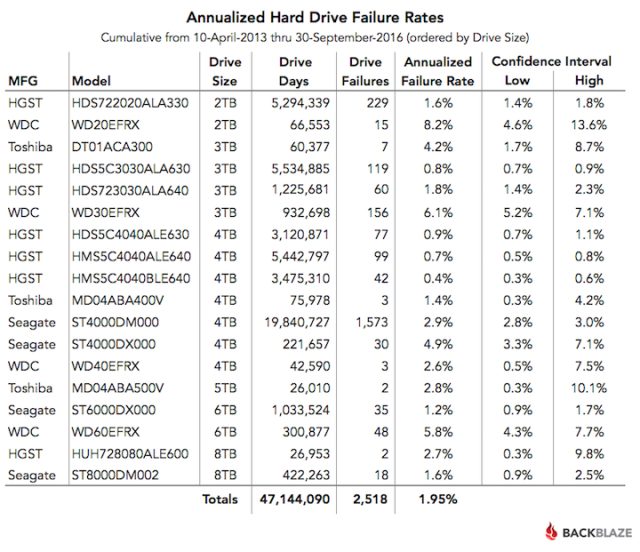
Cloud backup and storage provider Backblaze has published its latest batch of drive reliability data. The release covers failure information for the 67,642 disks that the company uses to store nearly 300PB of data.
This is actually fewer disks than the company had last quarter, even though the total capacity has gone up. That's because Backblaze has been upgrading, replacing 2TB disks from HGST and Western Digital with new Seagate 8TB ones. While this upgrade offers size and energy savings, it's only worthwhile if the failure rate is contained; any more than 2-3 times the failure rate and Backblaze says the migration won't be worth it.

Fortunately, the findings from last quarter appear to be holding true. The widely expected bathtub curve—high failure rates at the start and end of the drives' lives, with a period of low failure rates in the middle—isn't in evidence. The 8TB Seagate drives so far are showing an annualized failure rate of 1.6 percent; that's identical to the (consistently reliable) 2TB disks from HGST and substantially better than the 8.2 percent seen from the WDC disks. With only a quarter of the number of drives required, this is a clear savings. Presuming things don't take a turn for the worse, the move will mean greatly reduced failures even as the total storage capacity goes up.
This is in fact the best performance that the company has so far seen from Seagate disks. Backblaze has had a preference for Seagate drives due to their greater availability and affordability, even if they have had slightly worse reliability characteristics than their competitors. Right now, the 8TB units appear to be winners.
Of course, there are downsides that may discourage the use of these larger disks. In particular, arrays of such disks will take longer to rebuild; the longer an array takes to rebuild, the more likely it is that multiple failures will strike simultaneously. Backblaze's system allows for three simultaneous failures, and one hopes that the company has done the math to ensure that this system provides sufficient protection even with the larger volumes.
Reader Comments (96)
View comments on forumLoading comments...